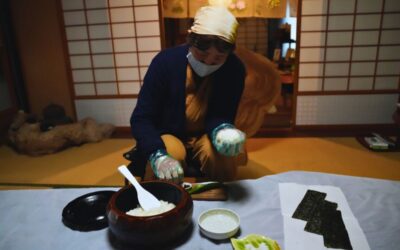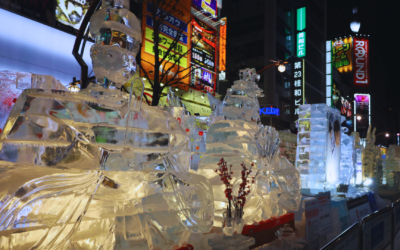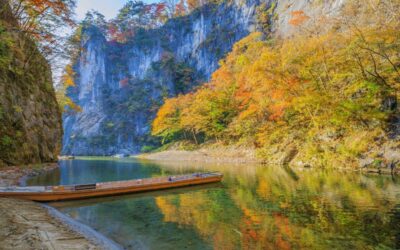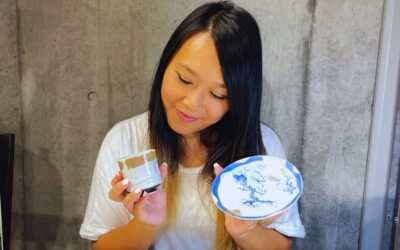Summer in Japan often gets a bad rap for being sweltering and sticky, but with the right itinerary, it can actually be one of the most vibrant times to visit.
While many travellers think escaping to Hokkaido is the only way to beat the heat, there are plenty of cooler, refreshing destinations dotted along and near the classic Golden Route—Tokyo, Kyoto, and Osaka.
From misty highland towns to breezy lakesides and coastal getaways, Japan has its own clever way of staying cool in summer—and you can experience it all without straying far from the main travel trail.
This 14-day itinerary is designed to help you dodge the worst of the heat while still soaking up the best of summer in Japan.
You’ll explore stylish resort towns like Karuizawa, admire Mt. Fuji from lakeside Kawaguchiko, take a dip in Japan’s largest lake, and chill out by the sea on the Izu Peninsula.
Along the way, you’ll experience some of Japan’s most exciting summer festivals, taste seasonal treats, and even pick up clever cooling gadgets the locals swear by. It’s the perfect summer route: refreshing, festive, and surprisingly relaxed.
Day 1: East Tokyo – Temples, Traditions & a Taste of Summer Festivals

Start your Japan adventure in East Tokyo, where tradition meets summer festival magic. Begin in Asakusa, home to the iconic Senso-ji Temple. Stroll through Nakamise Street, where the smell of freshly grilled senbei (rice crackers) and the sight of colourful yukata give you that instant “I’m in Japan” feeling. If your timing’s right, you might catch a local shrine festival or the early stages of summer fireworks season.
Next, head to Ueno Park, a laid-back green space perfect for a shaded walk. Cool off inside the Tokyo National Museum, or visit the Ueno Zoo if you’re travelling with kids. If you’re here in late July or early August, don’t miss the Sumida River Fireworks Festival—one of the biggest and most exciting in Tokyo, with colourful bursts lighting up the skyline and riverboats.

In the evening, make your way to Kagurazaka, a historic neighbourhood that comes alive in summer with evening lanterns, cobbled alleys, and quaint izakaya. Keep an eye out for smaller matsuri happening locally—they’re cosy, festive, and a great introduction to the energy of Japanese summer.
Since Japanese summers can get seriously hot and humid all across the country, it’s smart to gear up with a few locally popular items to help you stay cool. You’ll see plenty of people using uchiwa (flat fans) or sensu (folding fans), which are lightweight, super portable, and often beautifully designed. You can find them at 100-yen shops, souvenir stands, and even temple stalls, so they’re easy to pick up on your first day.
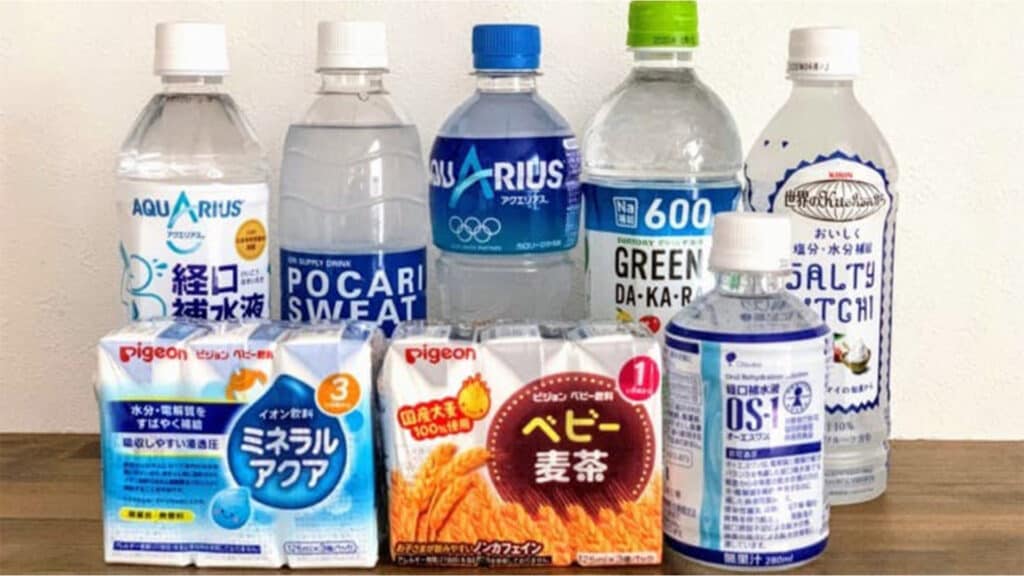
Another absolute essential is a cooling towel (ひんやりタオル)—a special fabric that cools down when you wet it and give it a snap. Just drape it around your neck while you’re walking or waiting for a train.
Convenience stores and drugstores also stock cooling body wipes (冷感シート) with menthol to freshen up fast, plus spray-on cooling mist, UV arm covers, and neck coolers that work like mini scarves with built-in chill packs. If you’re hitting places like Kyoto or Nara where you’ll be outside a lot, these are total lifesavers.
For longer days out, especially if you’re hiking or heading to places like Mount Fuji or the countryside, consider grabbing a wearable fan—a little USB-charged gadget that sits around your neck and blows cool air upwards.
You’ll also find electrolyte drinks like Pocari Sweat and Aquarius everywhere, which help keep you hydrated when it’s sweltering. It might feel a bit over-the-top at first, but trust us—you’ll be glad you stocked up early.
Day 2: Karuizawa – A Breezy Highland Escape from Tokyo

Escape the Tokyo heat with a quick morning hop on the shinkansen to Karuizawa, a mountain town that’s long been a summer favourite for those in the know. In just over an hour, you’ll trade city noise for crisp air, forested paths, and a peaceful, resort-style atmosphere. Even in August, it’s the kind of place where you might still need a light jacket in the morning—yes, really.
Start your visit at Kumoba Pond, a quiet, tree-lined lake that’s perfect for a relaxed walk. From there, head into Karuizawa Ginza Street, the old town area filled with bakeries, handmade craft shops, and little cafés with terrace seating under the trees. Pick up a light lunch here—this town is known for things like fresh blueberry jam, smoked cheeses, and flaky pastries that feel more European than Japanese.

In the afternoon, take a short taxi or local bus to Shiraito Falls. This elegant, curtain-like waterfall is surrounded by mossy green and forest shade—a natural spot to cool down, literally and mentally. If you’re up for one more stop, swing by Harunire Terrace, a collection of stylish wooden-deck cafés and shops next to a stream. It’s super relaxing and a great place to grab an iced coffee or a souvenir before heading back.
Catch a late afternoon or early evening train back to Tokyo. You’ll arrive back in the city recharged, with the scent of pine still fresh in your memory—and ready for a new side of Tokyo tomorrow.
Day 3: West Tokyo – Youth Culture, Green Escapes & Summer Cool-Off Spots

Back in Tokyo, it’s time to explore the west side, where the city’s energy is younger, louder, and way more playful—but don’t worry, there’s still plenty of shade and cool corners to escape the summer heat. Start your morning in Harajuku, where Takeshita Street buzzes with colour, crepes, and quirky fashion.
It’s chaotic in the best way, and you’ll find everything from character cafés to rainbow cotton candy. Pop into a few air-conditioned shops if the sun’s already climbing.

Just around the corner is Yoyogi Park, a summer oasis where locals chill out under the trees. Grab a cold drink and join them, or head into the nearby Meiji Shrine, hidden inside a lush forest that somehow feels miles away from the city.
For lunch, wander down to Omotesando, where stylish cafés and shaded terraces give you a much-needed break. Try a seasonal special—like a peach soda float or summer-themed parfait—at places like Aoyama Flower Market Tea House, where you literally eat among flowers.
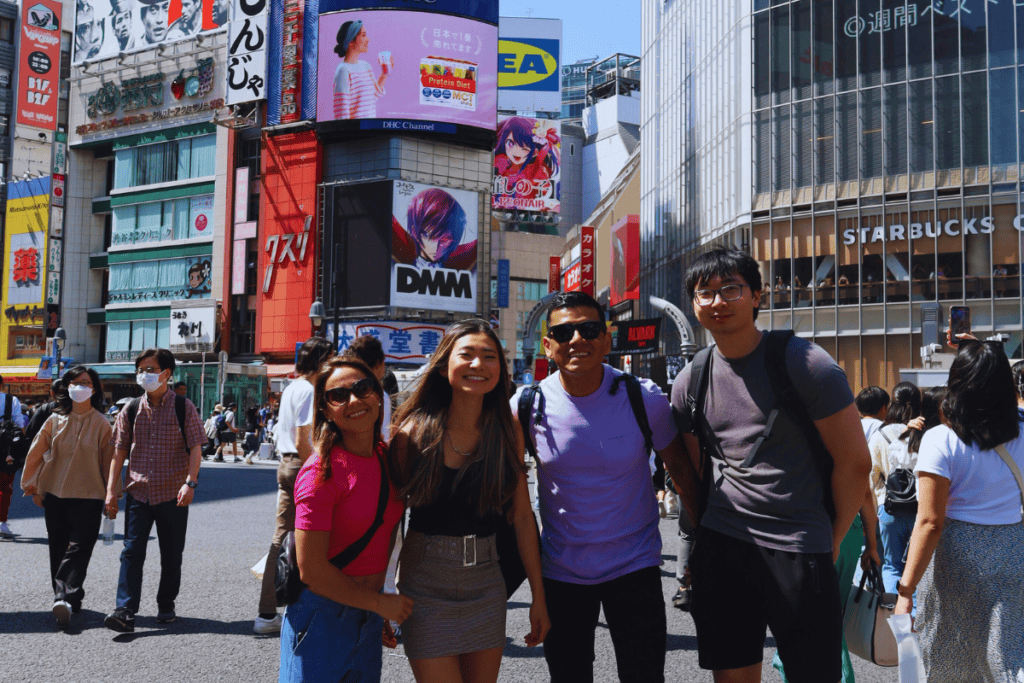
In the afternoon, take the train over to Shibuya. Duck into Shibuya Parco or Shibuya Scramble Square for shopping, chilled indoor spaces, and great rooftop views. If you’re keen for more fresh air, check out Shibuya Sky, an open-air observation deck perfect for late-day golden hour photos.

As evening sets in, head to Shinjuku. Start with a stroll through Shinjuku Gyoen if it’s still light, then ease into the night in Omoide Yokocho for yakitori or cool off with a citrus highball in a tucked-away bar in Golden Gai. The neon’s bright, the streets are buzzing, and the summer energy is everywhere.
It’s the perfect day to enjoy Tokyo’s cool corners and summer vibe—without ever overheating
Day 4: Kawaguchiko – Lakeside Fuji Views & Lavender Fields

After a refreshing break in Karuizawa and an exploration of Tokyo’s historic and modern sides, it’s time to head toward one of Japan’s most iconic summer views—Lake Kawaguchiko, right at the base of Mt. Fuji.
The journey takes a bit longer today (you’ll transfer by train or highway bus), but it’s scenic and chilled, and totally worth it once you arrive. The moment you step off the bus or train, everything slows down—cool lake breeze, open skies, and Mt. Fuji towering in the distance.
Drop your bags at your hotel or guesthouse and head out to explore. If you’re visiting in late June or July, make a beeline for Oishi Park, where the lavender fields bloom with Mt. Fuji in the background.

Even outside lavender season, the lakefront is beautiful, and there are plenty of spots to grab a cold drink or soft serve while soaking in the view. Kawaguchiko is known for its fruit in summer, especially peaches, so definitely try a fresh juice or peach ice cream.
Next, hop on the Mt. Fuji Panoramic Ropeway for views over the lake and surrounding mountains, or take a short hike up part of Mt. Tenjo if you’re feeling active. It’s shaded, peaceful, and not too tough—perfect for a summer walk.
If you’re lucky with timing, you might catch one of the Kawaguchiko fireworks festivals, usually held in early August, where colourful fireworks light up the lake with Fuji glowing faintly in the background.
Wrap up your day with a soak in an onsen—there are plenty of ryokan in the area with outdoor baths facing Mt. Fuji. Watching the sunset turn the sky pink behind the mountain while relaxing in hot spring water? Absolute perfection.
Day 5: Kawaguchiko – Boats, Villages & Musical Surprises

Wake up to the stillness of the lake, and take it slow today—you’ve earned it. Start with a leisurely cruise on Lake Kawaguchiko aboard the Ensoleille sightseeing boat, where the breeze on the water gives you the best kind of summer reset. If you didn’t already, explore the lakeside walking path for more Fuji photo ops and peaceful moments.
In the afternoon, head to Saiko Iyashi no Sato Nenba, a restored thatched-roof village on the neighbouring Lake Saiko. You can try on yukata or samurai armour, join craft workshops, or just chill out while taking in the mountain air and Fuji views from a different angle.
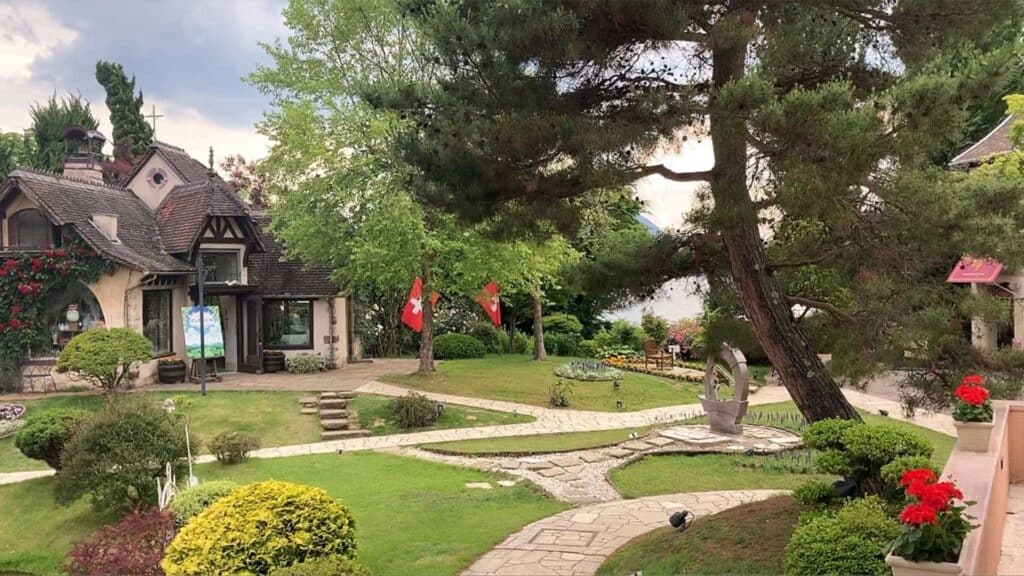
On your way back, pop into the quirky and cool Kawaguchiko Music Forest Museum—it’s got a weirdly wonderful mix of antique music boxes, European gardens, and live musical performances. A bit random, but surprisingly charming (and mostly indoors if it’s hot). If you’re lucky, another fireworks night might be on—many towns around Fuji host them across several nights in August.
Day 6: Lake Biwa – Lakeside Breeze, Summer Wandering & A Touch of History

Today you’ll swap mountain views for lake shores as you head west to Lake Biwa, Japan’s largest freshwater lake. It takes a few hours to get here from Kawaguchiko (about 4.5 to 5 hours by train), but once you arrive, everything slows down again—in the best way. Base yourself in Otsu, just northeast of Kyoto. It’s super easy to reach and has everything you need for a refreshing lakeside stop.
Once you settle in, head to the waterfront. Otsu’s Nagisa Park runs along the lake and is perfect for a relaxed walk or bike ride. The path is flat and shaded, with views of the mountains and small sandy spots where locals hang out, dip their feet, or picnic under trees. You’ll probably spot paddleboarders and kayaks drifting by, and if you’re feeling adventurous, you can rent one yourself for an hour or two.

One of the best ways to experience the lake is by hopping on the Michigan cruise boat, a big retro-style paddle steamer that takes you out on the water with live music, breezy decks, and a totally chilled vibe. Cruises run regularly from Otsu Port, and it’s an easy walk from the train station.

For a little local flavour, visit Omi Shrine, tucked into a quiet forested area with lots of shade and a peaceful summer stillness. If you’re there in early August, you might stumble across a small matsuri or fireworks night by the lake. Otsu is also home to the famous Lake Biwa Fireworks Festival, one of the biggest in Japan—if your trip lines up with it, it’s totally worth sticking around for.
Dinner by the lake is a must. Many small restaurants and inns serve up local summer dishes—cold noodles, river fish, and if you want to treat yourself, Omi beef, which is famous in this region. Try a sizzling steak, or go for something lighter like Omi beef sushi or a donburi bowl. If you’re staying near Ogoto Onsen, you can end the night with a soak in an outdoor bath overlooking the lake. It’s peaceful, breezy, and a perfect way to wind down after the journey.
Day 7: Kyoto – Torii Trails, Sake Tasting & Historic Streets

After your morning by Lake Biwa, hop on a quick train ride into Kyoto and head straight to Fushimi Inari Taisha, famous for its thousands of bright red torii gates snaking through a shaded mountain trail. Get there early-ish to avoid the heat and crowds—it’s a peaceful, otherworldly start to your Kyoto adventure.
Next, stroll over to the nearby Fushimi Sake District, one of Japan’s most historic sake-brewing areas. Visit a sake museum or pop into a brewery for tastings—Gekkeikan Okura Sake Museum is a great intro if you’re new to the scene. The area’s old warehouses and canals make for a relaxed, scenic midday wander.
By early afternoon, head north toward Higashiyama, where you’ll find the charming lanes of Ninenzaka and Sannenzaka. These gently sloped streets are lined with traditional shops and cafes—perfect for souvenir shopping or trying Kyoto-style sweets like yatsuhashi or matcha soft serve. Take your time exploring the backstreets and don’t miss the view from just below Kiyomizu-dera.

As the sun sets, Kyoto really shines. Head to Pontocho Alley, a narrow, lantern-lit street running along the Kamogawa River. Whether you’re up for riverside dining or just strolling the atmospheric alleys, it’s a gorgeous way to wrap the day.
If you’re after something truly special, consider booking a private dining experience—like an omakase sushi course or a kaiseki meal. We can help set that up! Just check out our experiences page.
If you’re in Kyoto during mid to late July, the streets come alive for Gion Matsuri, one of Japan’s most famous and oldest festivals. The build-up to the main parade includes evening street food stalls, traditional performances, lantern-lit floats, and locals in yukata wandering the city centre. The whole city feels festive, and you don’t even need to attend the parade to soak up the atmosphere.
Day 8: Bamboo Groves, Castles & Culture

Start early and head west to Arashiyama, a beautiful, breezy district that feels a world away from the city centre. Walk through the Bamboo Grove in the soft morning light, then visit Tenryu-ji Temple or rent a boat on the Katsura River if you’re feeling chill. The whole area is stunning and best enjoyed before midday.
After Arashiyama, make your way to Nijo Castle, an impressive UNESCO site known for its “nightingale floors” and gorgeous painted sliding doors. It’s mostly indoors (and air-conditioned!), so ideal for keeping cool in the afternoon.

Next, pop into Nishiki Market for lunch and snack-hopping. Try Kyoto-style sushi, grilled skewers, local pickles, or cold matcha desserts. The covered arcade makes it a great summer stop.
If you want more indoor downtime, this is a great afternoon to dip into Kyoto’s cultural side. Choose from:
- Kyoto National Museum – traditional Japanese art & history
- Kyoto International Manga Museum – for pop culture lovers
- Kyoto Handicraft Center – where you can browse or try your hand at fan-painting or other crafts
As evening falls, you might already be dreaming of a second round in Pontocho. Even if you dined there the night before, it’s worth another wander—different restaurants, new lighting, and that same quiet magic over the river.
Day 9: Nara – Morning Deer, Forest Paths & Glowing Lanterns
After your time in Kyoto, take a short and easy train ride (about 45 minutes) to Nara, the former capital of Japan and home to some of the country’s most peaceful parks and temples. While many people pop in for just a few hours, Nara absolutely deserves a full day in summer—it’s calm, green, and full of shaded paths that make exploring bearable, even on warm days.

Start your morning at Nara Park, where hundreds of free-roaming deer wander the open lawns and shaded groves. Get there before the midday sun to enjoy it while it’s still cool. You can pick up deer crackers (shika senbei) for around 200 yen and feed them—but be ready, they’re polite, but cheeky. If you want a good photo, head toward the wide open space behind Todai-ji or near the Sarusawa Pond, where it’s less crowded.
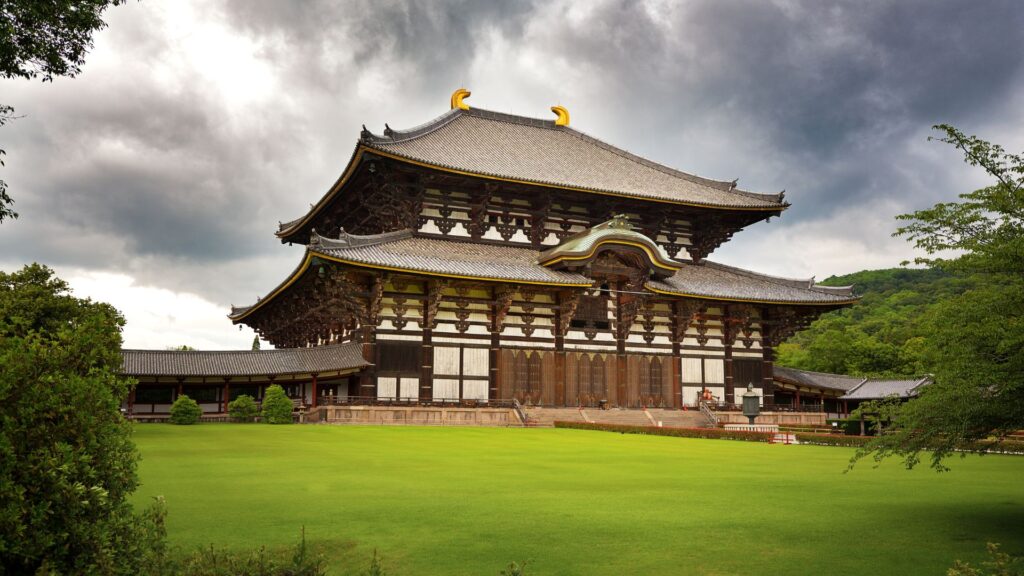
From there, walk to Todai-ji Temple, one of the most iconic sights in Japan, famous for its massive bronze Buddha (Daibutsu) and enormous wooden gate. Inside, it’s shaded and surprisingly cool, and the sheer scale of the place is hard to describe—it’s a must-see. Just behind the temple, follow the Daibutsuden trail deeper into the trees. This leads you through quieter paths toward Nigatsu-do, a temple perched on a hillside with a wooden balcony overlooking the park. It’s breezy, peaceful, and feels like a hidden gem.
In the afternoon, continue to Kasuga Taisha Shrine, one of Nara’s most important Shinto sites. The pathway to the shrine is lined with hundreds of stone lanterns, and the surrounding forest is beautiful and shady. It’s quiet here even in summer, and the shrine complex has a cool, timeless atmosphere. There’s also a little ice cream stall at the edge of the forest serving local persimmon and matcha soft serve—perfect for a mid-afternoon treat.

Now, if you’re visiting in early to mid-August, the real magic begins at sunset. During the Nara Tokae Lantern Festival, more than 20,000 lanterns are lit across Nara Park, Todai-ji, Sarusawa Pond, and Kasuga Taisha, turning the whole area into a glowing wonderland. You can walk freely through the park as volunteers light each candle one by one, and the reflection on the water at Sarusawa Pond is especially beautiful. It’s not crowded in a Tokyo-festival kind of way—more calm, dreamy, and atmospheric.
You can stay overnight in Nara (check out a machiya-style guesthouse in Naramachi, the preserved old town), or if you prefer a livelier night scene, head to Osaka this evening. Either way, Nara gives you a quiet, nature-filled summer day that’s rich in history—and totally unforgettable
Day 10: Osaka – Summer Food, Riverside Wandering & Festival Feels
Welcome to Osaka, Japan’s food capital and one of the best places to be in summer—especially in the evening, when the city comes alive with neon lights, riverside hangouts, and sizzling street food. After the peaceful rhythm of Nara and Kyoto, Osaka gives you a fun jolt of energy, perfect for the second half of your trip.

Ease into your day by heading to Nakanoshima, a riverside area with parks, museums, and breezy walking paths. You can relax under the trees in Nakanoshima Park, or pop into the National Museum of Art if you want a mix of cool air and contemporary exhibits. Grab an iced coffee at Brooklyn Roasting Company, right by the river, and enjoy the slower side of the city.
For lunch, take the train to Nakazakicho, a small, retro-style neighbourhood tucked away just north of Umeda. It’s full of charm—think vintage shops, quiet alleys, and old houses converted into artsy cafes. Stop at Salon de AManTo, a cosy spot with seasonal lunch sets, or try something sweet and summery at JTRRD, known for their colourful smoothies and fruit-topped desserts.
When the heat kicks in, Osaka’s underground arcades are a lifesaver. Dive into Whity Umeda or Namba Walk, massive underground shopping streets where you can browse, snack, or just stay cool. There are loads of souvenir shops and snack counters if you want to pick up edible gifts or try Osaka-style desserts like matcha mochi or soy milk ice cream.

As the sun starts to set, make your way to Dotonbori—easily one of the most iconic and vibrant places in the city. The neon signs, street food stalls, and canal-side energy are unreal in the evening. Grab takoyaki straight off the grill, try crispy kushikatsu from a standing bar, or cool off with a bowl of hiyashi chuka (chilled ramen with sliced cucumber, egg, and ham).

If you’re in Osaka in late July, try to catch the Tenjin Matsuri, one of Japan’s biggest summer festivals. It features traditional boat parades on the Okawa River, fireworks, music, and a lively crowd in yukata. Even outside the main festival dates, the city often hosts mini firework shows, river cruises, or night markets—perfect for soaking up the local summer spirit.
To finish the day, take in the night views from the Umeda Sky Building, or grab a drink at one of the many rooftop beer gardens around Umeda or Shinsaibashi. These pop up in summer with lanterns, fairy lights, and all-you-can-eat menus that feel like a proper summer celebration.
Day 11: Escape the City – Day trips from Osaka
After the electric energy of Osaka, today is your chance to step outside the city and breathe in a different kind of summer. Whether you’re craving highland calm or sun-soaked coast, Japan’s Kansai region delivers. Here are two great options for a full-day escape, each with their own seasonal charm.
Option 1: Mount Koya (Koyasan) – Sacred Trails & Cedar Breeze

If you’re in the mood for peace, forest air, and a total shift in pace, take the train up to Mount Koya, one of Japan’s most spiritual spots. From Namba Station, it’s about 2.5 hours by train and cable car—but the journey is all part of the experience. You’ll pass through countryside, rice fields, and finally climb into cedar-lined mountains where the air is cooler and the mood is deeply calm.
Once you arrive, visit Okunoin, a forested cemetery with mossy paths and thousands of ancient stone lanterns. Even in the middle of summer, the towering trees keep it shaded and cool. You can take your time walking the trail and stopping at the resting place of Kobo Daishi, one of Japan’s most important monks.
Next, visit the Danjo Garan temple complex, where bright red pagodas stand out against the green trees. Everything feels spacious and quiet up here. For lunch, try a shojin ryori (Buddhist vegetarian meal) at a local temple or cafe—it’s light, seasonal, and usually comes with cold tea and mountain vegetables.

If you don’t mind heading back to Osaka late, you could even stay until early evening, when lanterns start to glow and the whole mountain feels like something out of a dream. It’s an unforgettable summer reset.
Option 2: Wakayama – White Sand, Fresh Seafood & Summer Sea Vibes
If your idea of summer is all about water and sunshine, head south to Wakayama Prefecture, where beaches, coastal hot springs, and chilled-out seaside towns are waiting. The train from Osaka to Shirahama takes around 2.5–3 hours, and it’s worth every minute.
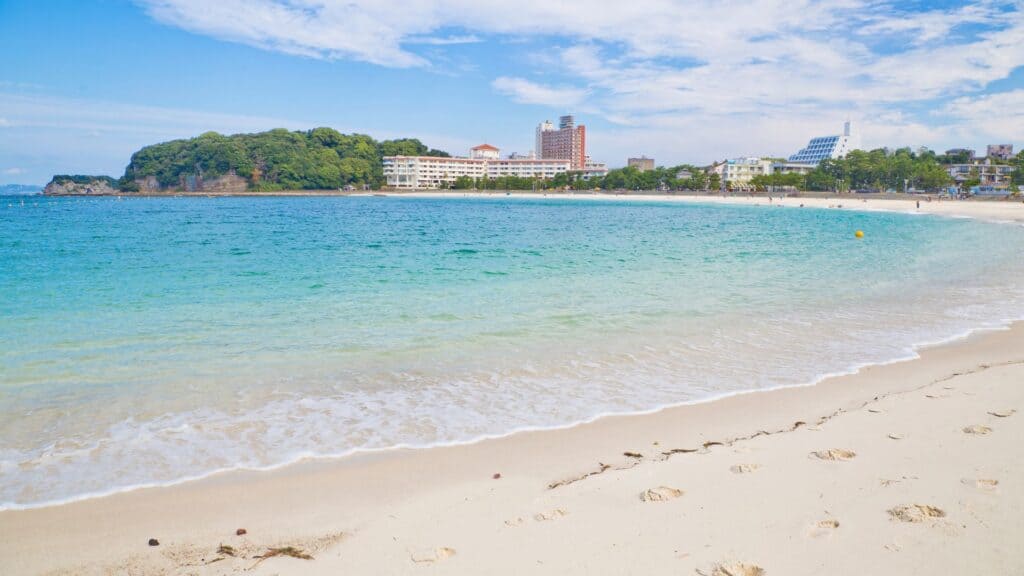
Spend your day on Shirahama Beach, a beautiful white-sand stretch with turquoise water, umbrellas for hire, and a resort-town feel. You can swim, sunbathe, or just wander barefoot along the shore with a cold peach soda in hand. There are convenience stores and cafes nearby if you want something casual, or you can sit down for fresh sashimi or seafood rice bowls at one of the local seaside restaurants.
In the afternoon, visit Saki-no-yu, an open-air hot spring bath perched right on the coast. It’s one of the oldest in Japan, and you can soak with views of the waves crashing just below. There’s nothing like it after a swim.
On the way back to the station, stop by Toretore Market, a huge seafood and souvenir market with local specialties and snacks. Try a taiyaki filled with peach cream or pick up a cute bottle of summer-themed sake to take home.
If you’re not rushing, you could stay overnight in Shirahama or make your way back to Osaka by evening—either way, you’ll end the day with sandy toes, sun-kissed skin, and a full-on summer glow.
Option 3: Himeji – Castles, Gardens & a Slice of Samurai-Era Japan

If you’re in the mood for iconic sights and a taste of old-world Japan, a day trip to Himeji is a no-brainer. Just under an hour from Osaka by train, it’s home to one of Japan’s most famous and best-preserved castles—Himeji Castle—and the vibe is pure fairytale meets feudal Japan.
Start your day at Himeji Castle, often called the “White Heron” for its elegant white walls that seem to soar above the city. It’s a UNESCO World Heritage site for a reason—massive gates, twisting passageways, and a six-storey main keep that offers panoramic views from the top. You’ll want at least an hour or two to wander the grounds and explore the interior—it’s surprisingly interactive and well-preserved for a structure that dates back centuries.
Next, take a short walk to Koko-en Garden, located just west of the castle. This peaceful spot is actually made up of nine connected gardens, each designed in a different Edo-period style. Think trickling streams, koi ponds, tea houses, and plenty of shady paths to escape the summer heat. There’s even a garden restaurant if you want to grab a quiet lunch with a view.
For food, Himeji has some great regional eats—try anago meshi (grilled sea eel on rice), a local speciality that’s lighter and summery, or pop into a family-run café near the station for something quick and casual. If you’re up for a sweet treat before heading back, keep an eye out for Himeji pudding—yes, it’s a thing.
You can be back in Osaka by late afternoon, or if you’re feeling extra adventurous, combine this with an evening stop in Kobe for dinner and sake tasting—it’s on the same train line and just 40 minutes away.
Option 4: Kobe – Sake Tastings, Stylish Streets & Waterfront Chill
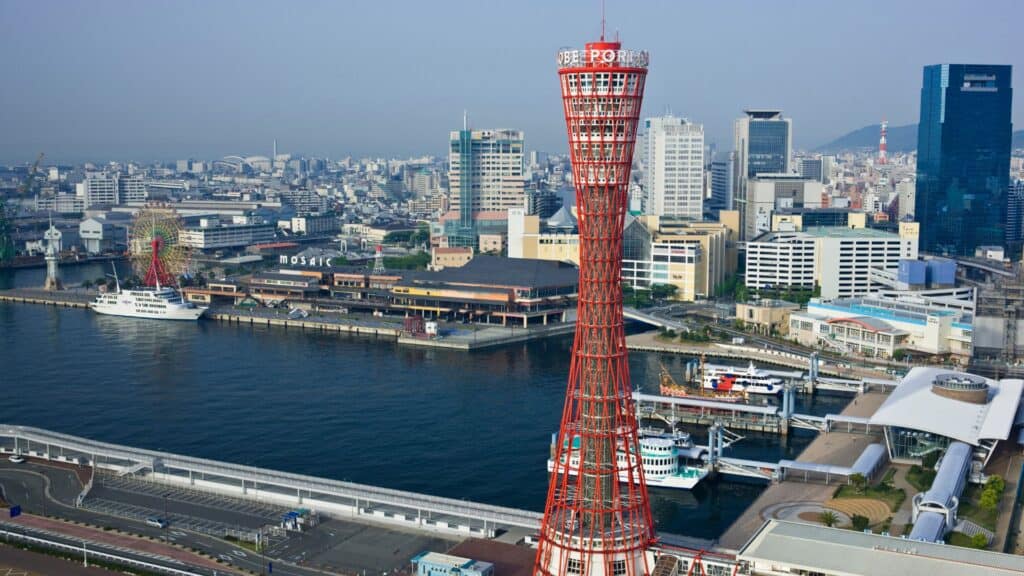
Craving something a little more urban-cool? Kobe is an easy hop from Osaka (just 25–30 minutes by train) and offers a totally different vibe: sleek city streets, seaside air, and a laid-back international flair that feels distinctly not Osaka.
Start your morning in Kobe Harborland, where you can walk along the waterfront promenade, grab a coffee with sea views, or even hop on a short bay cruise for a breezy ride past the city skyline. The Kobe Maritime Museum and Kawasaki Good Times World (motorcycles, trains, and tech!) are both great if you’re travelling with kids or just need some cool, indoor time.
By midday, head uphill to the Kitano Ijinkan District, where old Western-style houses once home to foreign merchants now double as museums and boutiques. The whole area feels unexpectedly European, with cobbled paths, ivy-covered buildings, and panoramic views over the city and sea. It’s a great spot for quirky shopping or a relaxed lunch at a café tucked into a historic house.
In the afternoon, make your way to Nada Sake District, one of Japan’s most famous sake-producing areas. Many breweries here offer free tastings and mini museums explaining how sake is made. Pop into Hakutsuru Sake Brewery Museum or Kiku-Masamune Sake Brewery—both are educational, easy to explore, and (most importantly) chilled. You’ll find seasonal summer brews and even sake ice cream if you’re lucky.
To cap off your day, treat yourself to the meal Kobe is famous for—Kobe beef, of course. Teppanyaki restaurants dot the city, and many offer lunch sets if you’re on a budget or prefer an early dinner. Watch the chef cook everything right in front of you while you sit back and soak up the luxury of it all.
Back in Osaka by evening—or stay in Kobe for a slower, more stylish wind-down—it’s the kind of day that feels a bit like a mini holiday within your holiday.
Day 12: Osaka to Izu Peninsula – Coastal Chill & Summer Glow
After the buzz of Osaka, it’s time to slow things down and shift into full holiday mode. Today, you’ll head east to the Izu Peninsula—a classic Japanese summer escape known for white-sand beaches, breezy ocean views, and a relaxed, outdoorsy vibe.
From Shin-Osaka, take the shinkansen to Atami (around 2.5 hours), then hop on the scenic Izu Kyuko Line for the final leg down to Shimoda. The journey takes around 4–4.5 hours in total, but it’s smooth and scenic, with sweeping views of the coastline along the way.
Once you arrive, drop your bags and head straight to one of the local beaches—Shirahama Ohama is a popular option with soft white sand, clear water, and a summery, laid-back buzz. Rent a parasol, splash in the waves, or just stretch out on a beach towel with a chilled drink in hand.

For lunch, you’ll find plenty of casual seaside cafés and eateries nearby—some serving beachy favourites like cold noodles or rice bowls, others offering fresh seafood caught right offshore. This region is known for kinmedai (splendid alfonsino), so if you spot it on a menu, go for it!
In the afternoon, keep things local and low-key. After a beach session and travel day, it’s a great time to check into your beachside hotel, onsen inn, or traditional ryokan. Many places offer ocean views and rotenburo (open-air baths), ideal for relaxing as the sea breeze rolls in. If you’re in the mood for one more dip, head to a coastal onsen nearby—many have outdoor pools just steps from the water.

For dinner, wander into town or ask your accommodation for a local recommendation. You’ll find plenty of spots offering set meals with grilled fish, sashimi, or other light summer fare.Staying in Atami instead of Shimoda? If your trip lines up with the Atami Marine Fireworks Festival, try to catch it. It’s short but beautiful, with bursts of colour lighting up the bay—best enjoyed from the beach or a terrace cafe.
Day 13: Izu Peninsula – Coastal Trails, Local Eats & One Last Soak
Ease into the day with a light hotel breakfast or something fresh from a local bakery—ryokan often serve simple, seasonal fare like cold tofu, fruit, or grilled fish with rice. Then, head out for one last adventure around Izu.
If you haven’t yet, today’s a great time to visit Mount Omuro—a perfect grassy dome of an extinct volcano with incredible 360° views of the peninsula and ocean. A short chairlift takes you to the crater rim, where you can walk the circular trail around the top. It’s an easy, breezy stroll and a real highlight of the area.
Just a short ride away is Izu Granpal Park, a fun and quirky stop if you’re after something more active or family-friendly. With open spaces, zip lines, water features, and seasonal events (including a night-time illumination display in summer), it’s a playful way to round off your Izu trip.
If you’d prefer to stay coastal, head back toward Shimoda and spend the late morning on the Jogasaki Coast Trail—a gentle, scenic walk along dramatic cliffs and through shaded forest. The suspension bridge near Kadowaki Lighthouse is especially fun, and the ocean views are stunning even in the heat, thanks to the constant sea breeze.

Need a break? Grab a cold drink or a seasonal dessert at a cafe nearby. Then head back into town for a late lunch—this is your last chance to savour Izu’s fresh seafood, whether as a donburi (rice bowl), grilled set, or colourful chirashi sushi.Wrap up the day with a sunset beach walk and a relaxed dinner—nothing fancy, just good food, cold drinks, and that soft evening light you’ll wish you could bottle up and take home.
Day 14: Departure Day – One Last Walk, One Last Taste
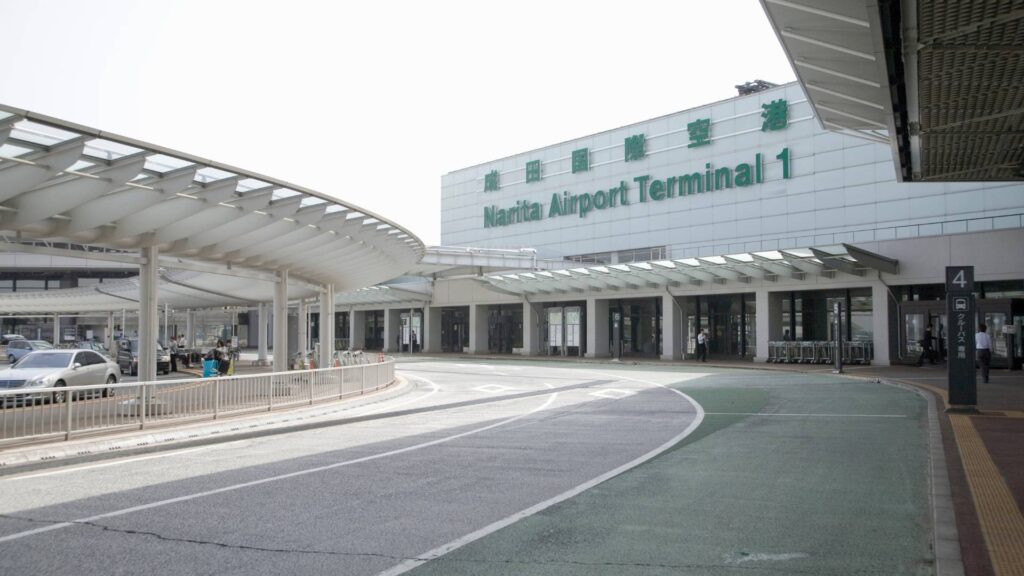
It’s your final day in Japan—and after beaches, bamboo groves, lakeside fireworks and mountain breezes, today is all about heading home feeling calm, rested, and maybe a little sun-kissed. Depending on where you’re flying from and your departure time, you’ll likely be heading back to Tokyo either early this morning or the night before. From Shimoda, Ito, or Atami, it takes around 2 to 3 hours to reach central Tokyo or the airports via train, so plan accordingly.
If you stayed in Atami overnight to be closer to Tokyo, start the morning with a light seaside walk along the Atami Sun Beach promenade, or pop into a local cafe for a cold brew and something sweet—Caffe Kinari near the station does nice light breakfasts with summer drinks and pastries. If you’re feeling like one last soak, Atami’s footbaths by the sea are free and open early—just sit, dip your feet, and watch the waves roll in.
If you’re flying out of Narita Airport, consider heading there early and dropping your bags at the terminal before hopping over to Naritasan Shinshoji Temple, just 10 minutes away by train. The peaceful grounds, shaded paths and traditional shops nearby make for a surprisingly chill last hour in Japan—and you can even grab a final taiyaki or matcha soft cream before heading back to the terminal.
For Haneda departures, the new Haneda Airport Garden complex gives you something extra—there’s shopping, cafes, and even rooftop footbaths with views of planes taking off. It’s a nice way to end your trip with one last dose of that thoughtful, easygoing Japanese travel style.
A Summer You’ll Actually Want to Remember

This two-week itinerary isn’t about ticking off temples or rushing through train stations. It’s about feeling Japan in summer—through forest air in Karuizawa, fireworks reflected in Lake Biwa, festival drums in Kyoto, and salty breezes on the Izu coast. You’ve followed the classic Golden Route, but added your own twist: cooler cities, lakeside lunches, and nights lit by lanterns instead of neon.
Travelling this way in summer gives you something different—something softer, slower, and just a little bit magical. From mountain mornings to riverfront dinners, there’s been space to breathe and time to wander. And really, isn’t that what travel’s all about?
Until next time—stay cool.


